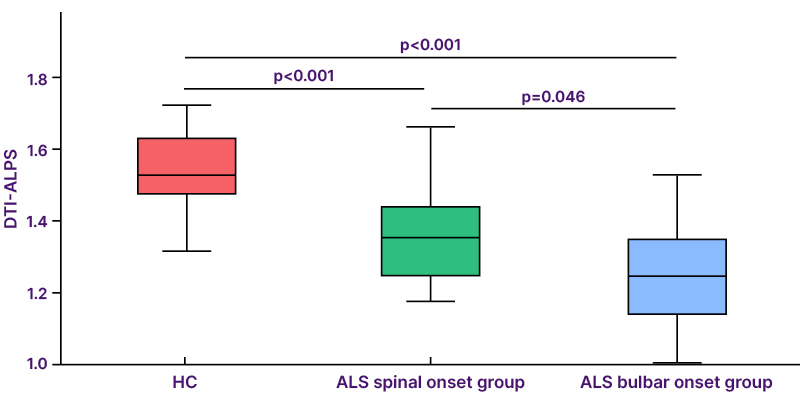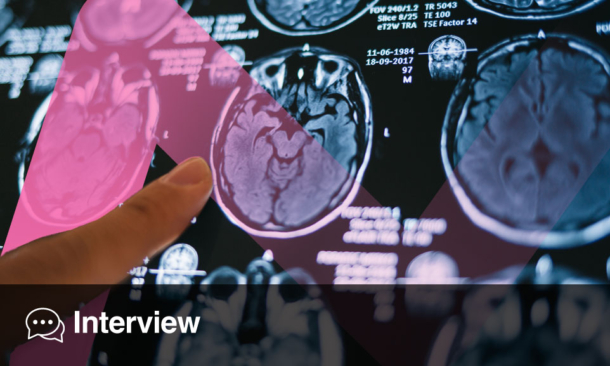BACKGROUND AND AIMS
Converging evidence supports a key pathogenic role of the glymphatic system in the accumulation of pathological aggregates in several proteinopathies, including amyotrophic lateral sclerosis and other motor neurone diseases (MND). This study aimed to verify glymphatic function impairment utilising diffusion tensor imaging analysis along the perivascular space (DTI-ALPS), explore its clinical correlations in MND phenotypes, and evaluate the relationship between glymphatic dysfunction and white matter (WM) damage.1
METHODS
Fifty-seven patients with MND (41 with amyotrophic lateral sclerosis, seven with lower motor neuron presentations, and nine with upper motor neuron presentations) and 32 age- and sex-matched healthy controls underwent 3 Tesla brain MRI, including DTI sequences. The authors obtained DTI-ALPS index from each individual, evaluating its relationship with measures of motor and cognitive disability, site of symptom onset, cognitive status, genetic status, and fractional anisotropy of WM tracts. Comparisons between groups were evaluated using ANCOVA models, which were age- and sex-adjusted. Partial correlations with clinical and cognitive measures were also tested.
RESULTS
Patients with MND exhibited significantly reduced DTI-ALPS index values compared to healthy controls (p<0.001). Patients with bulbar onset had lower DTI-ALPS values than those with spinal onset (p=0.046), as shown in Figure 1. Similar DTI-ALPS values were found across all MND phenotypes, with no effect of cognitive diagnosis or genetic status on these values. Significant correlations were identified between DTI-ALPS and disease duration (r=–0.30; p=0.03), and significantly lower values of DTI-ALPS were observed in patients presenting insomnia, compared to those without sleep disturbances (p=0.004). The authors assessed the relationship between DTI-ALPS index values and WM integrity, revealing significant positive correlations with fractional anisotropy in the anterior corona radiata (r=0.31; p=0.02) and the body of the corpus callosum (r=0.37; p=0.049).

Figure 1: Group comparisons of diffusion tensor imaging analysis along the perivascular space index between healthy controls and amyotrophic lateral sclerosis with bulbar or spinal onset.
SUDEP: sudden unexpected death in epilepsy.
CONCLUSION
This study confirms the presence of glymphatic dysfunction across MND phenotypes, with greater impairment observed in bulbar-onset cases, patients with longer disease duration, and those experiencing more pronounced sleep disturbances. These findings support a potential pathogenic role of glymphatic failure in the accumulation of transactive response DNA binding protein 43 (TDP-43) proteinopathy in MNDs. Moreover, the observed positive correlations between DTI-ALPS indices and WM integrity suggest that glymphatic dysfunction may contribute to or reflect the extent of WM damage in these patients.






